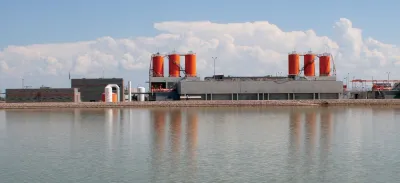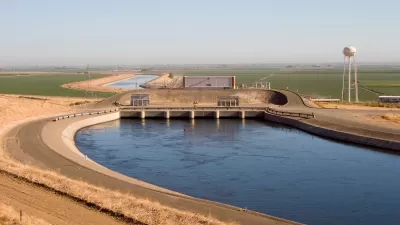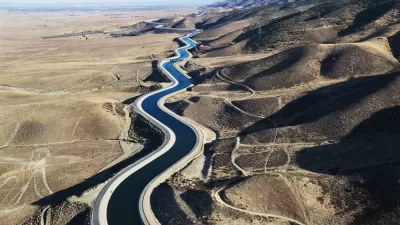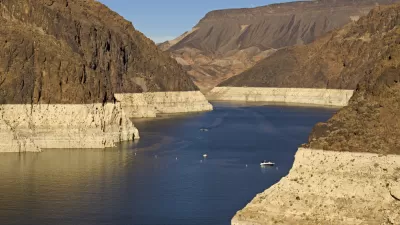As water supplies become strained and technology advances, cities look to wastewater as a viable source of drinking water.

A new water purification facility in El Paso, Texas will clean and deliver 10 million gallons of water per day from the city’s wastewater system to its drinking water system. “El Paso’s Pure Water Center, which will go online by 2028, is the first direct-to-distribution reuse facility in the country,” writes Martha Pskowski in Governing.
As Pskowski explains, “The advanced purification process begins with treated wastewater from the Roberto Bustamante Wastewater Treatment Plant in El Paso. This source water then goes through a multiple barrier system, first going through reverse osmosis, in which a membrane separates water molecules from other substances. Then hydrogen peroxide and ultraviolet light are used to kill bacteria in the water. Next, activated carbon absorbs chemicals or compounds in the water. Lastly, chlorine is added for disinfection.”
The project’s technology underwent testing before gaining approval from the Texas Commission on Environmental Quality (TCEQ). However, “Environmental advocates have raised concerns about contaminants of emerging concern in the purified water, like per- and polyfluoroalkyl substances (PFAS), which aren’t yet regulated in drinking water.”
This would be El Paso’s first direct-to-distribution system, but the city has been distributing treated wastewater for irrigation since the 1960s and pumping treated wastewater into local reservoirs since the 1980s. While El Paso is the first city to break ground on its project, Phoenix and Tucson are expected to start work on their own wastewater purification projects soon, and a similar project has been in the works in San Diego for years.
FULL STORY: El Paso Breaks Ground on First U.S. Facility to Turn Wastewater Into Drinking Water

Alabama: Trump Terminates Settlements for Black Communities Harmed By Raw Sewage
Trump deemed the landmark civil rights agreement “illegal DEI and environmental justice policy.”

Planetizen Federal Action Tracker
A weekly monitor of how Trump’s orders and actions are impacting planners and planning in America.

Why Should We Subsidize Public Transportation?
Many public transit agencies face financial stress due to rising costs, declining fare revenue, and declining subsidies. Transit advocates must provide a strong business case for increasing public transit funding.

Understanding Road Diets
An explainer from Momentum highlights the advantages of reducing vehicle lanes in favor of more bike, transit, and pedestrian infrastructure.

New California Law Regulates Warehouse Pollution
A new law tightens building and emissions regulations for large distribution warehouses to mitigate air pollution and traffic in surrounding communities.

Phoenix Announces Opening Date for Light Rail Extension
The South Central extension will connect South Phoenix to downtown and other major hubs starting on June 7.
Urban Design for Planners 1: Software Tools
This six-course series explores essential urban design concepts using open source software and equips planners with the tools they need to participate fully in the urban design process.
Planning for Universal Design
Learn the tools for implementing Universal Design in planning regulations.
Caltrans
Smith Gee Studio
Institute for Housing and Urban Development Studies (IHS)
City of Grandview
Harvard GSD Executive Education
Toledo-Lucas County Plan Commissions
Salt Lake City
NYU Wagner Graduate School of Public Service





























